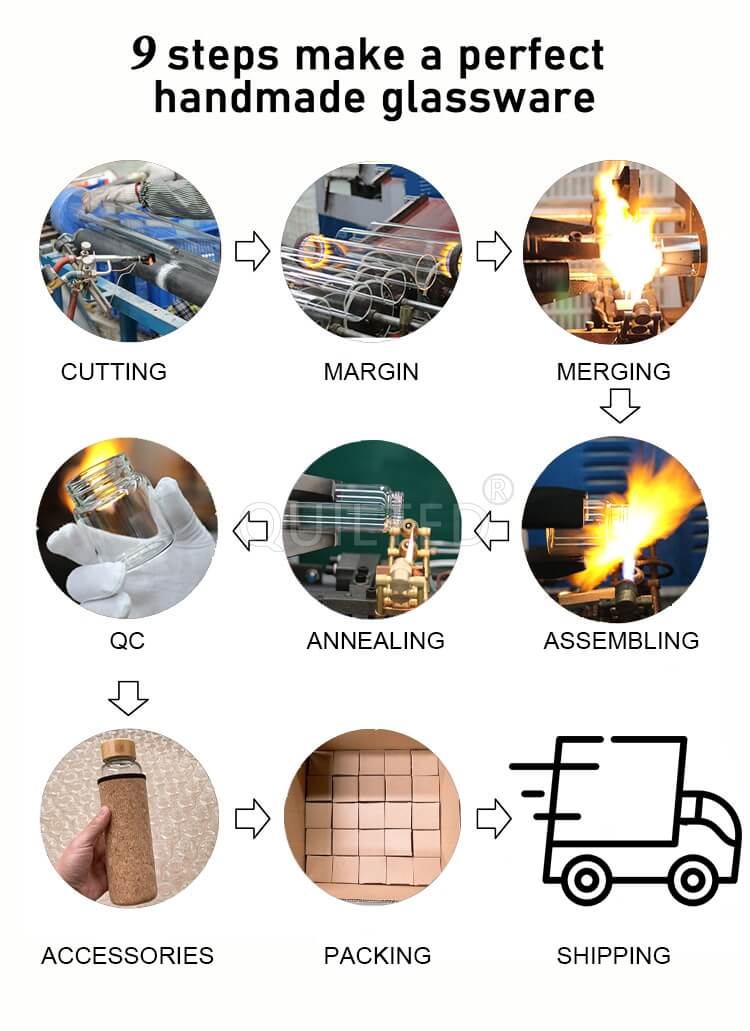High borosilicate glass is a specialized type of glass known for its exceptional properties, particularly in the context of heat resistance and mechanical strength. It is considered superior to ordinary glass in various applications, from laboratory equipment to high-quality cookware. Below, we delve deeper into the key differences between high borosilicate glass and ordinary glass, explaining why it is a preferred material in certain industries.

1. Coefficient of Thermal Expansion
The coefficient of thermal expansion (CTE) is a measure of how much a material expands or contracts when its temperature changes. This property is crucial in applications where materials are subjected to extreme temperature variations.
- High Borosilicate Glass: One of the standout features of high borosilicate glass is its low coefficient of thermal expansion. It is about one-third of that of ordinary glass, which means it expands and contracts much less when exposed to temperature changes. This significantly reduces the risk of cracking or breaking due to thermal stress. As a result, high borosilicate glass is highly resistant to thermal shock, making it ideal for applications such as laboratory glassware, cooking pots, and beakers that often experience sudden temperature changes.
- Ordinary Glass: Ordinary glass has a much higher coefficient of thermal expansion. As a result, it is more susceptible to stress from rapid temperature changes. For example, when ordinary glass is heated or cooled quickly, the material undergoes significant expansion or contraction, creating stresses that can lead to cracks or even complete failure. This is why ordinary glass is generally not recommended for applications where thermal shock resistance is crucial.
2. Main Components
The composition of glass plays a significant role in determining its physical and chemical properties. High borosilicate glass is formulated to provide superior strength and resistance to thermal and chemical stress.
- High Borosilicate Glass: This type of glass is primarily composed of boron trioxide (up to 14%) and silicon dioxide (up to 80%). The inclusion of boron enhances the glass’s resistance to thermal shock, as boron atoms help reduce the glass’s expansion during heating and cooling. Additionally, borosilicate glass’s chemical composition gives it excellent resistance to various chemicals, acids, and alkalis, making it suitable for use in laboratories and industries where exposure to harsh chemicals is common.
- Ordinary Glass: Ordinary glass is primarily made from sodium calcium silicate, with silica (SiO2) as the main component. The composition of ordinary glass does not include boron, which limits its ability to withstand thermal stress and harsh chemical environments. While it is suitable for common applications like windows and bottles, it lacks the advanced properties required for more demanding uses.
3. Tensile Strength
Tensile strength refers to the material’s ability to withstand pulling or stretching forces. Glasses with higher tensile strength can endure more force before they fracture or break.
- High Borosilicate Glass: High borosilicate glass has a significantly higher tensile strength than ordinary glass. This means that it can withstand greater mechanical stresses without breaking. When high borosilicate glass does break, it typically fractures into larger, unit-like pieces rather than shattering into sharp, dangerous fragments. This makes it safer to handle in environments where breakage could pose a risk.
- Ordinary Glass: Ordinary glass has lower tensile strength, making it more vulnerable to breaking under stress. When it does break, ordinary glass tends to shatter into smaller, jagged pieces, which can create safety hazards. This is one reason why ordinary glass is generally avoided in high-stress or high-impact applications.
4. Resistance to Thermal Shock
Thermal shock resistance is the ability of a material to endure rapid temperature changes without cracking or breaking. This property is particularly important for materials used in cooking, laboratory settings, and certain industrial processes.
- High Borosilicate Glass: One of the primary advantages of high borosilicate glass is its exceptional resistance to thermal shock. It can withstand extreme and rapid temperature changes without cracking. For example, it can endure the addition of boiling water (100°C) to the glass even when it is placed in a freezing environment (-30°C). This makes it an excellent choice for cookware (such as glass baking dishes), laboratory equipment, and other applications where temperature fluctuations are common.
- Ordinary Glass: Ordinary glass, on the other hand, is much more susceptible to thermal shock. When exposed to sudden temperature changes, it is likely to crack or shatter due to the rapid expansion or contraction of the material. This is why ordinary glass containers should never be exposed to boiling water or placed directly from a cold environment into a hot one.
Applications of High Borosilicate Glass
Given its superior properties, high borosilicate glass is used in a wide variety of applications that require high performance, safety, and durability:
- Laboratory Glassware: Due to its resistance to thermal shock and chemical corrosion, high borosilicate glass is commonly used in laboratories for beakers, flasks, test tubes, and other equipment that need to withstand both heat and chemicals.
- Cookware: High borosilicate glass is increasingly used in kitchenware such as baking dishes, measuring cups, and cookware, where its resistance to heat and thermal shock is a key advantage.
- Optical Instruments: The high optical clarity of borosilicate glass makes it suitable for lenses and other optical devices.
- Lighting and Electronics: High borosilicate glass is used in certain lighting and electronic components, where its durability and thermal resistance are essential.
Conclusion
High borosilicate glass is an advanced material that excels in applications requiring resistance to heat, mechanical stress, and chemical exposure. Its low thermal expansion, high tensile strength, and exceptional resistance to thermal shock make it superior to ordinary glass for demanding applications in fields such as laboratory work, cooking, and industrial processes. While ordinary glass is suitable for general purposes, high borosilicate glass’s unique properties ensure that it remains the material of choice in specialized applications where performance and safety are paramount.
Post time: Oct-29-2024
